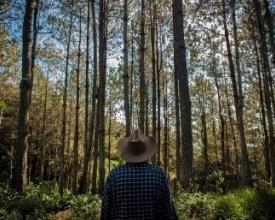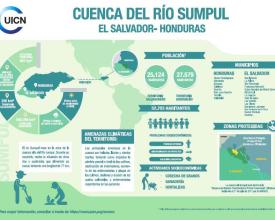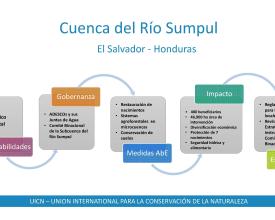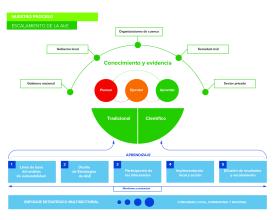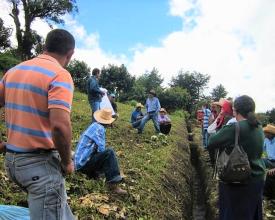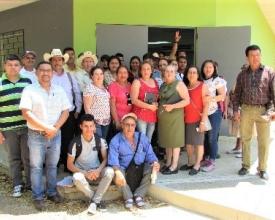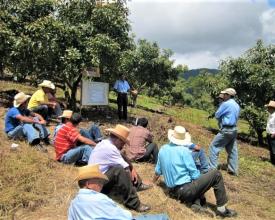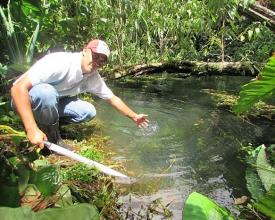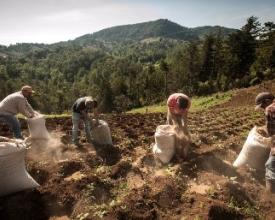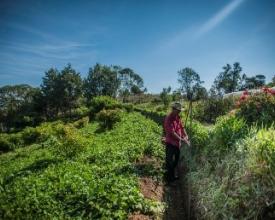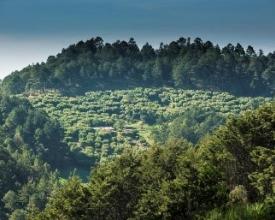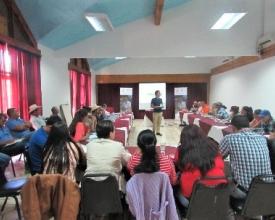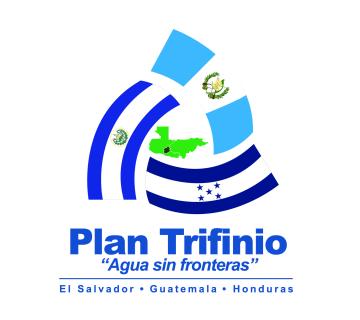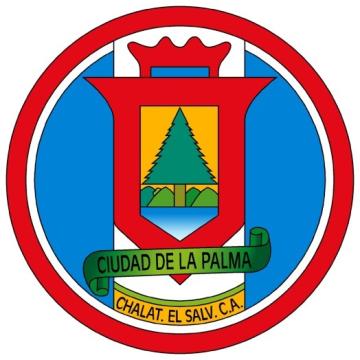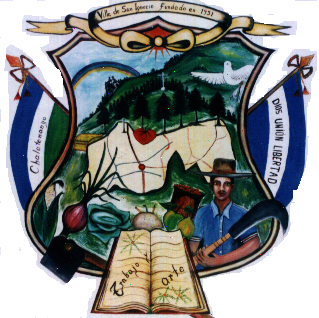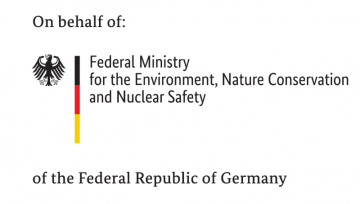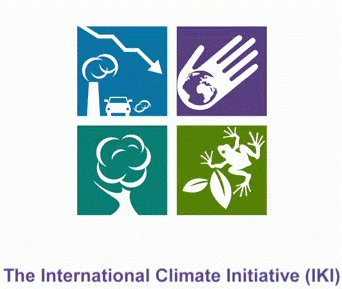
Food and water security of communities in the shared Sumpul River sub-basin
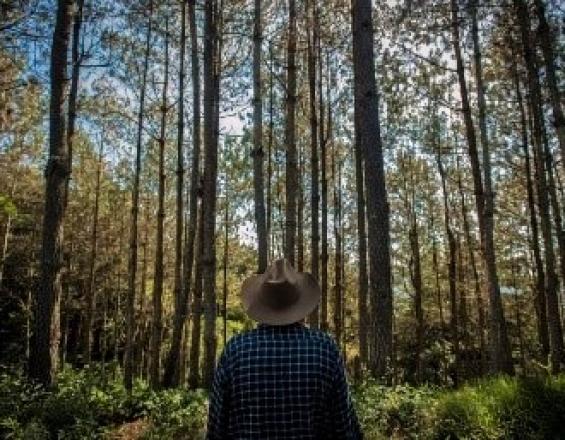
Water scarcity and extreme weather events are already a reality in the sub-basin of the Sumpul River, shared by Honduras and El Salvador, and will likely worsen as the impacts of climate change intensify. This makes adaptation responses necessary to increase the resilience of production systems and ensure water provision. To achieve this, 3 axes of work were combined: strengthening capacities and knowledge through an "action learning" approach; increasing the resilience of ecosystems and livelihoods by implementing ecosystem-based adaptation measures (EbA); and revitalizing the governance of the sub-basin. This led to the analysis of community vulnerabilities; the application of EbA measures in farms adjacent to water sources; the strengthening of the governance and management capacities of local authorities; the articulation of actions through the sub-basin’s Binational Community Committee; and the promotion of EbA as an effective response to climate change.
Context
Challenges addressed
- The sub-basin faces problems of environmental degradation due to deforestation and contamination of soil and water. Conflicts have also arisen between border neighbours over the use of water from the Sumpul River.
- The basin’s binational nature implies collaboration and coordination challenges between Honduras and El Salvador.
- There are weaknesses in the local management of water resources and scarce knowledge of decision makers and local leaders about ecosystem-based adaptation and how water management is a central part of it.
- The main climatic threats are: strong variations in rainfall patterns, extreme temperature fluctuations ("frosts") and strong winds; landslides, floods and recurrent droughts also occur. These all lead to damages in infrastructure (housing, nurseries, etc.), food production and local livelihoods (mainly vegetables and basic grains) and increase the vulnerability and migration of people.
Location
Process
Summary of the process
In the shared sub-basin of the Sumpul River (El Salvador-Honduras), governance for adaptation was strengthened (BB3) and EbA measures were implemented with producers (BB2) under a "learning by doing" approach (“action learning” BB1) that combines actions in the field, exchange of experiences, participation, dialogue, alliances and an ecosystem vision (BB2 and 3), and generates social capital. Therefore, the solution presents 3 Building Blocks (BB). Combining them led to progress in the community governance of a binational territory (BB3), the adaptive capacity of local communities and the resiliency of their livelihoods (BB1 and 2), especially their agroforestry systems. Demonstrating the relationship between adaptation and water provision also facilitated scaling-up of the EbA approach (BB3) and its institutionalization into policy and management instruments, such as the Strategic Plan of the Binational Community Committee of the Sumpul River Sub-basin and the Local Adaptation Plans of the Las Palmas and San Ignacio Municipalities (El Salvador). Thus, several sustainable development objectives were met by articulating social capital with natural capital for greater socio-environmental resilience in the face of climate change.
Building Blocks
"Action learning" and monitoring to increase capacities and knowledge
Supporting producers to implement EbA measures that improve their productive practices and increase the resilience of agro-ecosystems, generates an "action learning" process that allows other actors to witness the benefits of these measures and creates conditions for their sustainability and up-scaling.
- The socio-environmental vulnerability of communities and their livelihoods is examined, in a participatory way, in order to then prioritize EbA measures and their location.
- Technical support is provided to producers, complemented with their traditional knowledge, to plan and implement the EbA measures (improvements to agroforestry systems).
- Training and exchanges of experience are carried out on transboundary cooperation; integrated management of water resources; AbE; policy frameworks and legislation on water and climate change; and policy influencing and communication.
- Monitoring of food and water security is carried out with 14 families.
- The governance and management capacities of community and municipal entities linked to water resource management is strengthened.
The increase in skills and knowledge strengthens social capital and contributes to community empowerment and to valuing ecosystem services and their management for the benefit of all.
Enabling factors
- Climate change and, in particular, the availability of water, are factors that concern stakeholders in the sub-basin, which increases their willingness to take part in dialogue, constant learning, the search for solutions and joint actions.
- Plan Trifinio has been implementing conservation measures in the territory for years and works closely with local producers and actors. The institution also has ample experience with participatory processes, which is another enabling factor for successful “action learning” processes.
Lesson learned
- To achieve changes at the landscape level, work must first be grassroots, at the community level. For this, strengthening the capacities of Water Committees, which are part of the Community Development Associations (ADESCOs), so that they can widen the scope of their interventions beyond sanitation requirements, has been crucial.
- Exchanges of experience (e.g. with actors from the Goascorán River basin and with other ADESCOs from other parts of the basin) were an effective mechanism to reinforce collective learning and demonstrate the advantages of transboundary collaboration.
Resources
Community implementation of adaptation measures in forests and agroforestry systems
The EbA measures implemented in the sub-basin focused on water and soil ecosystem services, on productive diversification and on mitigating the impacts of climate change on crops and community assets. Together with >100 producers from the upper part of the sub-basin, fruit and timber trees were introduced into agroforestry systems bordering 7 water sources, and organic agriculture was encouraged, allowing families to diversify their income and reduce the vulnerability of their crops, productive infrastructure and housing, which are affected by strong winds. This, in combination with soil and water conservation practices (hillside irrigation ditches, non-burning and crop residue incorporation), has helped to reduce soil erosion caused by extreme rainfall, as well as improved moisture retention in crops, soil fertility, and water infiltration and capture in the area. The EbA measures not only generate more resilient agro-ecosystems, but also increase the availability of water, which benefits >400 families in the sub-basin. These actions have raised awareness of the need for ecosystem and adaptive approaches to territorial management in the face of climate change.
Enabling factors
- Improving the state of soils is not only a way to ensure increased productivity, but also in the medium term, helps to reduce the tendency for migratory agriculture, as it ensures that families can work the same plots for many years. This influential factor favours the uptake of soil conservation practices by families.
- Plan Trifinio began years ago a forest incentives scheme for forest owners with the aim of contributing to their protection and with that, to water capture in the basin.
Lesson learned
- The staggered planting of crops with fruit and timber trees is a very effective way to raise awareness of the benefits of associating trees with crops. It makes it possible to tangibly see how agroforestry systems can help to address the impacts of climate change and diversify family income.
- The implementation of agroforestry systems and soil conservation practices should allow crop diversification and increases in income to accrue in a short period (using basic grains, avocado, etc.) and not only over the medium and long term (use of pine trees and cypress). For this to materilize requires joint planning between the producer and the technical advisor.
- It is important to take into account land tenure where water sources are located. Municipalities commonly own only the water springs and not the lands that surround them. This entails working with the owners of the forests and lots that surround the water sources, to protect and/or restore those lands and allow the installation of pipes to provide communities with water.
Revitalizing governance for adaptation
To be effective, governance for adaptation must be multidimensional and participatory, which entails involving farmers, municipalities, ministries and other public institutions in the area, community leaders, public health units and educators, in water management and adaptation processes. In the Sumpul River, this was achieved particularly through "action learning" processes and the revitalization of the Binational Community Committee of the Sub-basin. The work and local legitimacy of the Binational Committee was enriched by the inclusion of community bodies that for years were disjointed and lacked participation, such as the Water Committees, which are important entities in each community. New management instruments were also generated, leadership and the active participation of youth and women was promoted within the Binational Committee, and training and exchange of experiences were carried out for collective learning. Other contributions to governance came from producers who implemented EbA measures on their farms (and are now spokespersons for the benefits derived from such measures) and from municipalities (La Palma and San Ignacio) that integrated the EbA approach into their policies through the formulation of Local Adaptation Plans.
Enabling factors
- The prior existence (since 2012) of the Binational Committee is a key enabling factor, as it was not necessary to start from scratch, an existing structure could instead be strengthened through restructuring, after a diagnosis of its operations and key actors/leaderships.
- In order for the Water Committees to contribute to a shared management model with a basin-wide vision in the Binational Committee, they must first improve their own organizational and management capacities, to then be better able to advocate for and represent their communities.
Lesson learned
- Having biophysical studies and specific technical information on water resources and EbA facilitated the processes of raising awareness, motivating participation, adopting agreements and implementing targeted actions, which in turn helped to avoid the dispersion of resources.
- Increasing the effectiveness and sustainability of governance processes entails constant efforts over many years, which often exceed the duration of cooperation projects. Therefore, it is convenient to seek to, on the one hand, maximize synergies between projects and, on the other hand, maintain a presence and accompaniment in the territory through successive projects.
Impacts
- Implementation of EbA measures in agroforestry systems (crop diversification, soil conservation practices and works, and protection of water sources) benefiting >100 producers in the sub-basin.
- Greater articulation between key actors of the sub-basin linked to the integrated management of water resources.
- Strengthening of 4 Water Committees in the upper part of the sub-basin (Municipalities of La Palma and San Ignacio, El Salvador) and internal regulations for the water supply systems for human consumption.
- Participatory formulation and adoption of new planning and management instruments for existing governance platforms (Binational Community Committee of the Sumpul River Sub-basin and 4 Water Committees, which are locally known as "Water Boards" and a core part of the Community Development Associations, ADESCOs).
- Technical accompaniment by the Municipalities of La Palma and San Ignacio (El Salvador).
- Greater communication and advocacy capacities after training 38 community leaders in negotiation, policy influencing and communication.
Beneficiaries
- >400 families from the upper basin of the Sumpul River, in particular >100 producers.
- ADESCO Water Committees of 4 communities
- Municipalities of La Palma and San Ignacio (El Salvador)
- Binational Community Committee of the Sumpul River Sub-basin
Sustainable Development Goals
Story
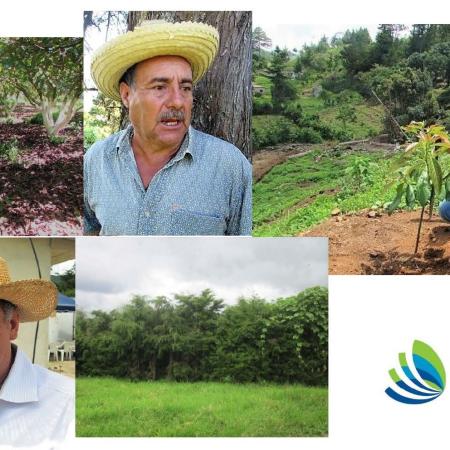
Mr. Eduardo Santamaría S.:
"For 36 years I was a cabbage farmer and I ended up changing my assets in order to produce avocados."
Today Eduardo produces avocado, cabbage and basic grains and has extensive experience in soil conservation works and practices, including Ecosystem-based Adaptation measures, such as the use of: level and underpass irrigation channels (ditches), tracing of contour lines, live barriers, windbreaks, management of crop residues, and vermiculture. In Eduardo's avocado forest there is abundant leaf litter and pruning material, which reduces runoff, improves water infiltration and moisture retention in soils, prevents erosion and provides nitrogen through its decomposition. .
"The farmer needs to be supervised and helped by a technician. The union of both is essential in order to produce healthier and more environmentally-friendly foods. The aim is to guarantee the sustainability of agricultural systems and thereby reduce the impacts of climate change.”
Mr. Ignacio Salguero: "Chemical agriculture only brought me headaches ..." Eight years ago, Ignacio opted to change his conventional agricultural methods and challenged himself to learn about organic farming. Having inherited unbalanced soils, pests and diseases, today he is a benchmark for organic agriculture in the upper basin area, producing numerous food crops in an ecological way. His plot has been visited by public officials, students, people from Honduras, Guatemala, Nicaragua, Germany, El Salvador, with the objective of witnessing the sustainability measures and soil conservation practices developed there.
"Agroecological agriculture is life, it is health, it is wellbeing, it is family integration, it is quality of life and this is not found in wealth, but in peace, tranquillity, stability, security, better markets, reductions in production costs. And this has allowed me to overcome the financial crisis that chemical agriculture left me... Today I go to sleep content and can work at my own pace."
Mr. Noé Alvarenga: "Plan Trifinio and IUCN gave us pine trees and cypresses to plant ... which help to protect the water spring that is used to irrigate four productive plots; they also gave us 110 avocado trees that we planted in a totally deserted plot. The land was just debris; it was a thicket. Today it is awesome! Today it is already a demonstration plot. The avocado has strengthened us; it helps the environment and helps us financially."

